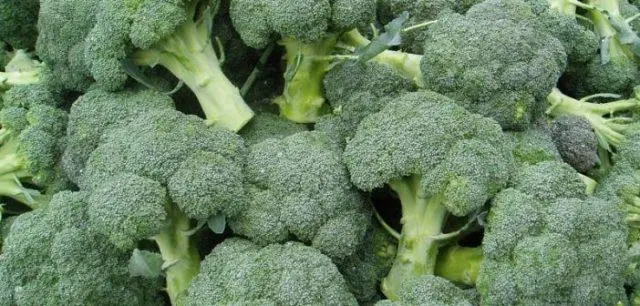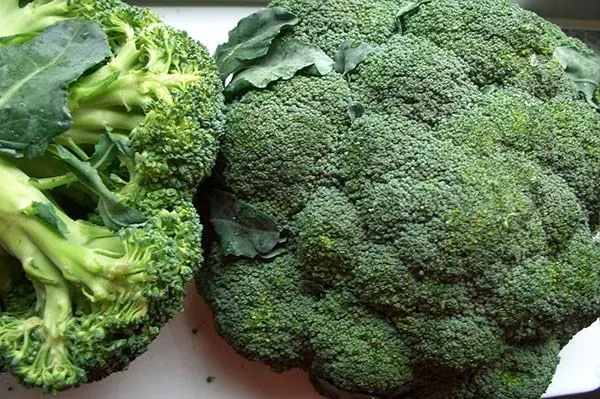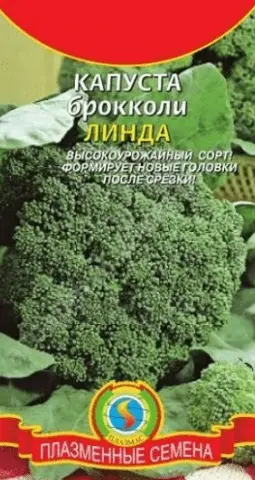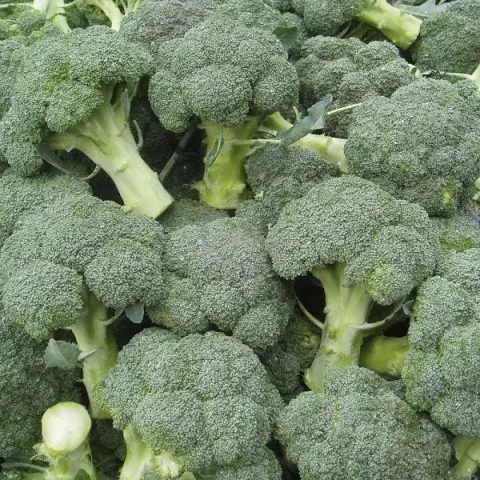Contents
Growing broccoli in the Urals is quite possible, since seedlings need cool conditions (10-15 degrees). At the same time, many varieties have time to ripen in just 60 days from the moment of transplantation. This is quite enough for a full harvest.
Is it possible to grow broccoli in the Urals
When growing in the Urals, you need to pay attention to a number of nuances:
- Two methods of agricultural technology are available – direct sowing in the ground and cultivation in a greenhouse.
- It is necessary to transfer seedlings of seedlings to the beds no earlier than mid-May.
- Sowing seeds in the ground is allowed at the end of May.
- For growing in open beds, it is better to choose hybrids, since they are distinguished by the greatest cold resistance.
The best varieties of broccoli for the Urals
Many varieties of broccoli are cold-resistant, so they grow well even in the climate of the Ural region. Among the varieties, two groups can be distinguished – for open ground, as well as for the greenhouse. Representatives of each of them are described below.
For open ground
For cultivation in open beds in the Urals, you should choose those varieties of broccoli that are most resistant to temperature extremes, drought and other negative factors. These include:
- Tone.

- Virus.

Tonus – a variety of broccoli for the Urals with small heads of cabbage (each 200 g). Inflorescences of moderate density, may go into color. Fruits with a brown tinge. Lateral inflorescences are also small, weighing up to 65 g. But at the same time, the yield is friendly. For the season you can get up to 2 kg per square meter. This cabbage has a very good taste, besides it is rich in vitamins and minerals.
Vyarus is a hybrid of early ripening (60-70 days). Heads of cabbage are small, 250-300 g. At the same time, they are transportable and lie for a long time during storage. Ideal for freezing, as they do not lose their taste. Rosettes of leaves are raised, medium in size, grayish-green in color. The heads are rounded, with small tubercles, dense, granular. Inflorescences are easily separated from each other.
For greenhouse
In the greenhouse, you can grow varieties of broccoli that are less adapted to open ground. In the Urals successfully cultivated:
- Laser F1.

- Linda.

Laser F1 is a hybrid that matures in 70-75 days. Forms a raised rosette with leaves. At the same time, the heads are large, dense, the color is dark green, the weight reaches 800 g and even 1 kg. Lateral inflorescences – up to 7 heads. Productivity when grown in the Urals – up to 4 kg per square meter.
Linda – a popular hybrid variety, belongs to the late-ripening. Heads are formed on average in 100 days. But in the greenhouse, the period is reduced to 80-90 days. Medium-sized fruits, weight 400 g. Rich green color, looks very nice. Lateral inflorescences are medium-sized – an average of 60-70 g. Plants are low, while the yield reaches 4 kg per 1 m2.
Heads of cabbage are consumed fresh, as well as frozen or canned.
Early
Early varieties of broccoli for the Urals ripen in just 80-90 days. Among them are:
- Hybrid Batavia F1.
- Lord F1.
The characteristics of Batavia indicate that it is a mid-season variety, but usually it ripens earlier – in just 65-70 days. Therefore, it can be attributed precisely to the early ripening varieties.
This variety has green foliage, sometimes a grayish tint. Along the edges of the sheet plates have a wavy shape. The heads are spherical, moderately dense. Inflorescences at the same time easily get rid of each other.
The hybrid is very productive – when grown in the Urals, this variety of broccoli gives heads weighing up to 1,4 kg (side – up to 250 g). Due to the early ripening period, the culture is grown both as seedlings and by direct sowing in the ground. Two months later, 2-2,5 kilograms of crop can be removed from each meter. Batavia is suitable for the Urals, because it is cold-resistant and tolerates heat well. Fruits until frost.
Lord F1 is another hybrid suitable for the Urals. Characterized by excellent taste. Usually it is grown through seedlings – the seeds are sown in the first half of April.
Gives corrugated leaves of dark green color. The stems are strong, dense, the head is rounded, flattened, very large. Weight reaches 1,5 kg. Inflorescences are easy enough to divide and then use fresh or for preservation. It ripens in 65-70 days, so this kind of broccoli is suitable for the Ural region.
Inflorescences on the side continue to form until early October, they are small – up to 200 g. In total, up to 1 kg of crop can be removed from 4 square meter.
The middle-ripening
Mid-season varieties give a harvest in 80-90 days, i.e. no later than three months. Popular varieties include:
- Ironman F1.
- Dwarf.

Ironman is a hybrid of the first generation (F1), which produces medium-sized dome-shaped heads
The inflorescences are dense, weighing approximately 500 g. The Ironman variety is suitable for the Urals, it is formed in just 80 days. At the same time, up to 3 kg can be collected from each square meter. The head is attractive in appearance, with shades of blue-green. Lateral shoots grow rapidly. The foliage is green with a bluish tint.
Gnome is another variety of broccoli that is successfully grown in the Urals. Heads of medium size, usually weigh about 600 g. They are not very dense, while the taste is excellent. After cutting off the main head, inflorescences grow on the side, weighing up to 200 g each. Ripening is fast – up to 70 days. Moreover, the yield is high – up to 4 kg per square meter. A variety of broccoli for the Urals is suitable for fresh consumption and for canning.
Late
Despite the fact that late varieties of broccoli ripen for more than 80 days, they are also suitable for growing in the Urals. Among the most popular are two hybrids:
- Agassi F1.

- Marathon F1.

Agassi F1 gives a strong bush, the head is round, partly flattened, weighs 500-700 g. In the Urals, such broccoli is planted in greenhouses or in open ground for the May holidays. The ripening period is 80-90 days. The yield is very high and is 3-4 kg per 1 m2.
Marathon F1 is a hybrid variety of broccoli for cultivation in the Urals. Gives rounded heads weighing 700-800 g. The color is green, with bluish tints. Inflorescences of rather dense structure. Shoots from the side grow well, increase productivity. They ripen in 80 days, sometimes up to 90. The yield indicator reaches 3 kg per 1 m2. Can be used fresh and canned. It has a very pleasant taste.
Features of growing broccoli in the Urals
There are two ways to grow different varieties and hybrids of broccoli in the Ural region. The traditional option is to obtain seedlings with subsequent transplantation into open ground or into a greenhouse. But early ripe varieties can also be grown by direct sowing in a flower bed. This is a fairly effective method that is suitable even for the climatic conditions of the Urals.
Growing seedlings
When growing seedlings, it is important to determine the timing of sowing. Seeds are sown 1,5 months before transplanting into the ground, i.e. in the beginning of April. They are pre-soaked in warm water, then planted in boxes to a depth of 1 cm and covered with a film. Before germination, they are grown under room conditions, then at a temperature of 10-15 degrees. They are transferred to the garden at the end of May. The planting pattern is standard – 50 cm between rows and 30-35 cm between plants.

After the emergence of seedlings, you need to maintain a temperature of 10-15 degrees
Landing in open ground
In open ground, seeds should be sown only after there will definitely be no return frosts. Work begins in the second half of May, as well as in the first decade of June. If an early ripe crop is chosen, it will have time to give a full crop.
Especially large seeds are chosen for sowing. The soil is pre-prepared – fertilized with compost or humus (up to 10 kg per square meter). The surface is leveled, several furrows are marked with a depth of not more than 1,5 cm. The prepared seeds are sown in the ground, moistened. After germination, the film is removed, thinning is done so that the distance between plants becomes 30 cm.
Conclusion
Growing broccoli in the Urals is quite possible; many varieties, mostly hybrid ones, are suitable for this. First you need to carefully prepare the soil and seeds. It is also important to determine the timing – seedlings are sown in early April, and transferred to the beds no earlier than the second decade of May.














